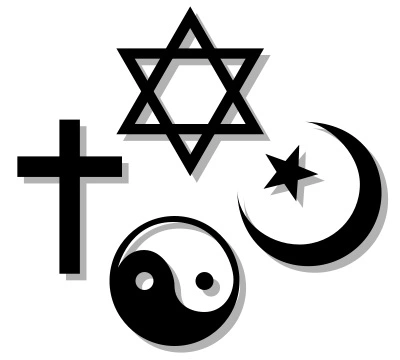Religion in Canada
Publié le 22/02/2012
Extrait du document

The complex religious heritage
of the nation of Canada. For thousands of
years before European contact, Native Americans
dwelling in what is now Canada practiced various
forms of Native American Religions. In the far
north, in areas bordering the Arctic Ocean, this
heritage has been Inuit (Eskimo). Inuit spiritual
practice has particularly involved hunting religion
(see PRIMAL RELIGION) and SHAMANISM. The Native
American religious heritage, evidenced in such
common symbols as the "totem pole," has been
important to many Canadians of both indigenous
and European or other descent.
The Roman Catholic Church came to Canada
with French settlement in what is now Nova Scotia
in 1603, spreading to the present Québec in 1608.
With the settlements came Jesuit and Franciscan
missionaries eager to spread Catholicism among
the native population. During the 17th century,
European Canada, centered around the St. Lawrence
River, was essentially French and Catholic.
But rivalry with Britain, as it established colonies
on the Atlantic seaboard of what would become
the United States, was intense and resulted in a
few Protestant settlements in the area. In 1763, as
a result of the treaty ending the Seven Years' War
(known in America as the French and Indian War),
Canada passed from French to British rule. British
settlers, soon abetted by Loyalists from the rebellious
Thirteen Colonies south of Canada, quickly
occupied the territories now known as the Maritime
Provinces and Ontario.
Soon the fundamental religious and cultural
alignment of Canada that has prevailed ever since
was in place: Québec, the main area of original
French settlement, French in language and culture
and Roman Catholic in religion; the Maritime Provinces,
Ontario, and, in time, provinces further west
were mainly Protestant, with signifi cant Catholic
minorities. Protestants were originally largely
Anglicans from England, Presbyterians from Scotland,
and members of smaller British denominations.
Roman Catholics from Ireland also came to
Canada.
Canada is, however, like the United States (see
UNITED STATES, RELIGION IN), a nation of immigrants
and so a nation of religious pluralism. Over the
years, German, Scandinavian, Dutch, and eastern
European newcomers brought Lutheran, Reformed,
and EASTERN ORTHODOX religious life to the northern
nation. Russian MENNONITES, seeking religious
freedom, arrived in 1874, and Chinese Buddhist
railroad workers in the 1880s. A Jewish synagogue
was established as early as 1760 near Montréal. In
the 20th century, SIKHS, Muslims (see ISLAM), and
HINDUS came to Canada in signifi cant numbers.
By the turn of the 21st century, Canada's population
of 31 million was 45 percent Roman Catholic
and nearly 25 percent Protestant and other Christians,
such as Mormon and Eastern Orthodox. The
largest Protestant denomination was the United
Church of Canada, formed in 1925 as a union of
Methodists, Congregationalists, and some Presbyterians.
Next largest was the Anglican Church
of Canada. Most other wings of Christianity were represented, and Canadians also included some
600,000 Muslims, 400,000 Jews, 300,000 Hindus,
300,000 Sikhs, and 250,000 Buddhists. Many Canadians
were nonreligious.
In the latter half of the 20th century, religious
life in Canada seemed to be in decline. It appeared
to be at a midpoint between most of Europe, where
church attendance has fallen precipitously since
the end of World War II, and the United States,
where it has remained at a high level. All major
denominations had decreased in membership
except Pentecostalism, which has increased. The
Roman Catholic Church, while growing in absolute
numbers, has seen attendance decline signifi -
cantly. Québec, once a stronghold of traditional
French Catholicism, is now no more religious than
anywhere else. It seems clear that Canada has a
distinct religious culture that is fi nding a middle
way between Europe and the United States.
Liens utiles
- Relationship between religion, spirituality, and young Lebanese university students’ well-being.
- : En quoi ce passage est-il une parodie des romans de chevalerie et une satire de la religion ?
- ANTHROPOLOGIE POLITIQUE ET SOCIALE. THEME : LE MOUVEMENT ALMORAVIDE ENTRE ECONOMIE ET RELIGION.
- Ethique appendice du livre I de Spinoza: déterminisme et religion
- dissertation philo science et religion: Pourquoi le développement scientifique n'a-t-il pas fait disparaître les religions ?































